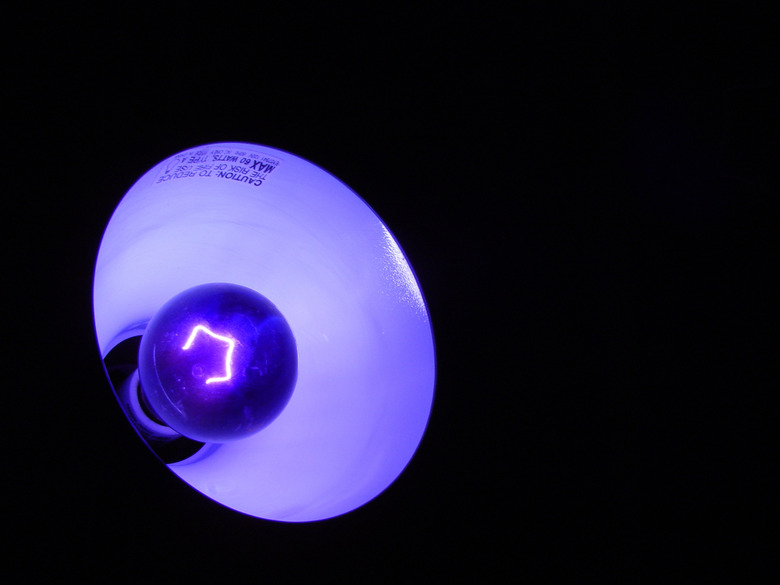What Kind Of Invisible Stains Do Black Lights Detect?
Crime shows on television have one thing right: Certain substances radiate beneath the purple-blue glow of a black light. A big hit in the 1960s, many kids outfitted their rooms with black lights and the special fluoresced posters that glimmered beneath them. What may appear invisible to the naked eye, shows up under the rays of a black light because certain stains and objects absorb the short wavelengths of UV light and reflect it back almost immediately. Substances that glow beneath a black light contain rigid molecular structures with fluorescent electrons scattered over the framework of the molecule.
TL;DR (Too Long; Didn't Read)
Black lights detect items that contain fluorescers within them when the UV rays from the light shine on them. Some of the spills a person might find with a black light include:
* Biological stains: saliva, semen,
urine and blood
* Laundry stains: dried liquid
detergents
* Club soda and all liquids containing
quinine
* Invisible ink made from lemon juice
or similar compounds
* Toothpaste with whiteners that
fluoresce
Biological Fluids
Biological Fluids
Crime scene investigators hunt for evidence of a crime by using a black light and sometimes an added sprayed-on chemical to locate dried and cleaned up blood stains. Beneath a black light, blood turns black, unless sprayed with luminol which gives it a blue-glow. Saliva, semen and urine also glow when hit with a black light. Most biological fluids contain fluorescent molecules to help them glow. When hunting down that spot where Fido urinated, use a black light in a dark room to find and clean it instead of your nose.
Laundry Supplies
Laundry Supplies
Certain laundry supplies contain fluorescent materials within them. Generally, manufacturers add fluorescers to make them brighter than bright white. Detergent residues or spills may leave no visible stain, but when subjected to the rays of a black light, they glow with an eerie blue glow. These elements within laundry detergents may also cause white clothing in photographs to appear as a shade of blue.
Vitamins, Toxic Oils and Invisible Ink
Vitamins, Toxic Oils and Invisible Ink
Other substances or spills that glow beneath a black light include the antifreeze used inside a vehicle. Antifreeze harms pets if they ingest it, so if you have any spills in the garage that require ferreting out, a black light does the trick. A researcher developed a patented spray that when used on clothing with a black light can detect the toxic oil urushiol derived from poison oak and poison ivy plants that leads to an itchy rash on the body. Invisible inks made from lemon juice become easy to read beneath the luminosity of a black light. Spilled and crushed vitamins may not leave a stain and may disappear into the carpet unless you apply a black light to them to clean the area.
Cite This Article
MLA
Brenner, Laurie. "What Kind Of Invisible Stains Do Black Lights Detect?" sciencing.com, https://www.sciencing.com/kind-stains-black-lights-detect-5045775/. 26 April 2018.
APA
Brenner, Laurie. (2018, April 26). What Kind Of Invisible Stains Do Black Lights Detect?. sciencing.com. Retrieved from https://www.sciencing.com/kind-stains-black-lights-detect-5045775/
Chicago
Brenner, Laurie. What Kind Of Invisible Stains Do Black Lights Detect? last modified March 24, 2022. https://www.sciencing.com/kind-stains-black-lights-detect-5045775/
